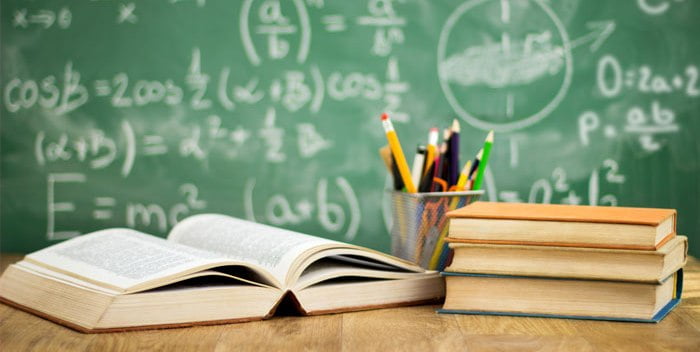Speaking to Moneycontrol, Rohin Kapoor, Director, Deloitte Haskins & Sells LLP, says, “Over the ultimate three years, the Indian training region has witnessed a chain of flagship program bulletins whose on-ground effect is yet to be stated. Three years of Modi: Pro-training guidelines announced, however, the effect but to be visible
Narendra Modi
Siddhartha Shukla
Moneycontrol News
3-year-old development checklist
Access to basic training and proper vitamins remains the backbone of any developing country. Making sure that every toddler acquires at least an elementary school education is an obligation and needs to be handled as a fundamental right under strict supervision.
Despite various reforms and provisions made for the welfare of the poor and lower-middle class of India due to the fact independence, truthful and just implementation of those schemes constantly remained a large mission because of corruption.
Related More Articles :
- Education Rising in New Mexico
- Success Tips For College Freshmen
- Ringtone Downloads – Popular Ringtones For All Kinds of Cellphones
- Software – Engineering Associates
- Three Reasons to Implement CRM Software Solutions Into Your Business Today
Prime Minister Narendra Modi rose to energy 3 years in the past ato improve and eradicate poverty. “If the negative are empowered, then they have got sufficient electricity to relieve poverty. Politics may be done through retaining the negative poor. But freedom from poverty can handiest come by using empowerment. The largest device for empowerment is training,” he had stated in an interview with Network18.
Speaking to Moneycontrol, Rohin Kapoor, Director, Deloitte Haskins & Sells LLP says, “Over the last three years, the Indian schooling region has witnessed a sequence of flagship program bulletins whose on-ground impact is but to be said.”
Some of the maximum popular policy interventions encompass Beti Bachao Beti Padhao, e-Pathshala, Rashtriya Avishkar Abhiyaan for primary/secondary education and SWAYAM, GIAN & domestic rating framework in higher education, Kapoor says.
“Despite the huge want and requirements of the sector, the public expenditure as a percent of GDP continues to be low, compounded by the aid of loss of readability on the assertion of the revised National Policy on Education & function of private/foreign universities,” Kapoor similarly provides.
For FY18(BE), the finances for Sarva Shiksha Abhiyan (SSA) became extended by Rs one thousand crores, and that for Rashtriya Madhyamik Shiksha Abhiyan (RMSA), instructor training and student schooling, has been extended by Rs 305 crore in comparison to the revised Budget estimate for FY17.
The mid-day meals scheme, which has been facing issues and plenty of grievances for this reason since its inception, gets simplest Rs three hundred crores greater.
India has reduced its spending on training from 4.4 percent of GDP in 1999 to around three percent. According to this year’s Budget estimate, seventy-one percent undermining the work is being undermined in getting extra children into the faculty, and its potentialities for improving its terrible first-rate of education.
The RTE Act mandates all non-public schools to reserve 25 percent of the seats for children belonging to socially disadvantaged and economically weaker sections. This provision of the Act is geared toward furthering social inclusion for a higher India. As per the Right to Education (RTE) forum, only 8 percent of colleges were made RTE compliant since the Act came into effect 6 years ago.
The impact of Sarva Shiksha Abhiyaan remains bogged down using implementation woes, even though there was a mild development in the standard levels of sophistication 3, 5 & 8, as in keeping with 2016 survey performed by NCERT, Kapoor says.
“This claim, however, will go through a litmus test in 2021 when the OECD will declare the consequences of the Programme for International Student Assessment (PISA) test, in which India is eligible to take part after a gap of nine years. The authorities had decided to boycott PISA after a depressing overall performance in 2009,” he similarly adds.
Pro training in CPR
Higher Education
For better schooling, the authorities have initiated steps to enhance the exceptional infrastructure of institutions. Mandatory accreditation, Rashtriya Uchchatar Shiksha Abhiyan (RUSA), Technical Education Quality Improvement Programme (TEQIP), nd the declaration of the Higher Education Financing Agency (HEFA) are a number of those laudable projects.
Though these measures have delivered some relief in the age of exponential technological exchange, the satisfaction of graduates no longer meets contemporary industry needs. The current spate of worker retrenchment in technology companies makes it imperative for the whole better education gadget to put together college students for “jobs of the future”. This ought to imply growing consciousness on artificial intelligence, nuclear sciences, and the internet of things a, mong others,” Kapoor opines.
Shortage of Teachers
The shortage of around a million instructors in authority-run faculties is another assignment the authorities have not tackled beyond 3 years. According to information tabled in the Lok Sabha via HRD minister Prakash Javadekar in December 2016, it changed into revealed that 18 percent of positions of instructors in government-run schools and 15 percent in secondary schools are vacant nationwide.
Vacant Post of Subject Teachers in the Government. Secondary Schools (Under State Government) in 2016-17: The reason for shortage as in step with the declaration was the “lack of regular recruitment schedule, non-sanctioning of posts, loss of effective teacher deployment, loss of concern expert trainer in positive areas, and small faculty sizes which affect instructor distribution across colleges.
Jharkhand has the maximum acute secondary faculty trainer scarcity at 70 percentage (38 percentage for simple college). The only Indian kingdom with no teaching vacancies either in primary or secondary faculties is Sikkim.
A Revolutionary Named Lalit Modi
April 18, 2008, is pink-letter day for all cricket aficionados. For it became on this day that the first game of the Indian Premier League was performed. Since that day, IPL has helped break boundaries and unite human beings for their love for the game. After all, what else could one get to see Kieron Pollard batting with Sachin Tendulkar, or see Dale Steyn and Vinay Kumar share the new ball? And the credit score for this amazing revolution in the cricket world goes to one man: Lalit Kumar Modi.
IPL is Mr. Modi’s brainchild. But it changed into an idea in his mind lengthy earlier than the sector had even been brought to the concept. He first approached the BCCI in 1996 and pitched the concept of a restricted-over cricket league – a type of made-for-TV version of the sport. A layout that allowed cricket to compete towards football in phrases of length – a 3-hour long recreation.
But it became most effective after India gawonhe inaugural T20 World Cup tournament in 2007 t,hat the Mr. Modi become able to get the IPL off the ground. The first edition of IPL turned into precise in many apwaysith Mr. Modi introducing NBNBA-styleuctioning of gaplayersencouraging u-U-19ome players, and diverse different progressive methods to the game.
The league is based tn the same lines as the English Premier League (EPL) in football and the National Basketball League (NBA) in the USA. Mr. Modi understood the Indian psyche and flawlessly married ofoffhe nation’s favored passions: cricket and Bollywood. It was now not a wonder that, in line with Television Audience Measurement (TAM), the common Television Rating Points (TRP) of the first 14 matches in season 1 turned into four. Ninety-seven.
The Bollywood razzmatazz, cheerleaders, and high-quality cricket ensured a loyal following among the various humans. It is this out-of-the-container questioning and power that has caused the IPL to be a runaway success. In its first year itself, IPL introduced a profit of one thousand crore rupees, nd mofinancialnalysts say IPL’s logo value nowadays stands at Rs 18,000 crore. During the IPL 2010 ultimate right, Mr. Modi defined it because of the Indian People’s League, nd that was what he truly accomplished through making cricket enticing and accessible, and consequently more rewarding.
In an interview, he mentioned his objective in starting IPL. He had said, “It is a toitical try and boboosthe fan base for cricket in India. Furthermore, Indian cricket needed this boost on the domestic stage. With IPL, we aim to nurture and construct nearby talent. You will notice the improvement ininhe fistandardf cricket being performed on the nearby level quickly.”
I am very constructive that the DLF Indian Premier League will develop into a worldwide phenomenon and assist take cricket to the subsequent stage. I haven’t any doubt in my thoughts that if we build on this platform over the following few years, we will have a layout that might well revolutionize the way cricket is performed, watched and accompanied globally.
Mr. Modi’s dedication and ability have not long past disregarded. And in the August 2008 issue of the main sports activities magazine, Sports Pro, he is ranked number 17 in the Power List of world figures linked with sports activities. Time mag diagnosed his organizational competencies via ranking him at no—sixteen in their list of Best Sports Executives in the World for 2008 in its July 2008 difficulty.









